Winter is hardly the best time to go driving. There’s the inevitable, painful waiting for your car to heat up when it first turns on, the snow that can slow forward progress, the invisible ice that can instantly send you veering off course — and, of course, the simple fact that you can’t put your arm out the window and cruise unless your name is Wim Hof.
Still, as any car enthusiasts who grew up in snowy climes can tell you, there’s still plenty of fun to be had even in those darkest, coldest months. Low temperatures mean fewer cars, fewer cyclists and fewer pedestrians to worry about sharing the road with; leafless trees make it easier to see around corners.
Regardless of how good a time it may be to drive, however, we at Gear Patrol take our mission of testing out new vehicles damn seriously. So as the carmakers continue to roll out new and improved vehicles 12 months a year, we’ll keep testing them 12 months a year. Here’s the latest batch of vehicles we’ve been driving around this winter.
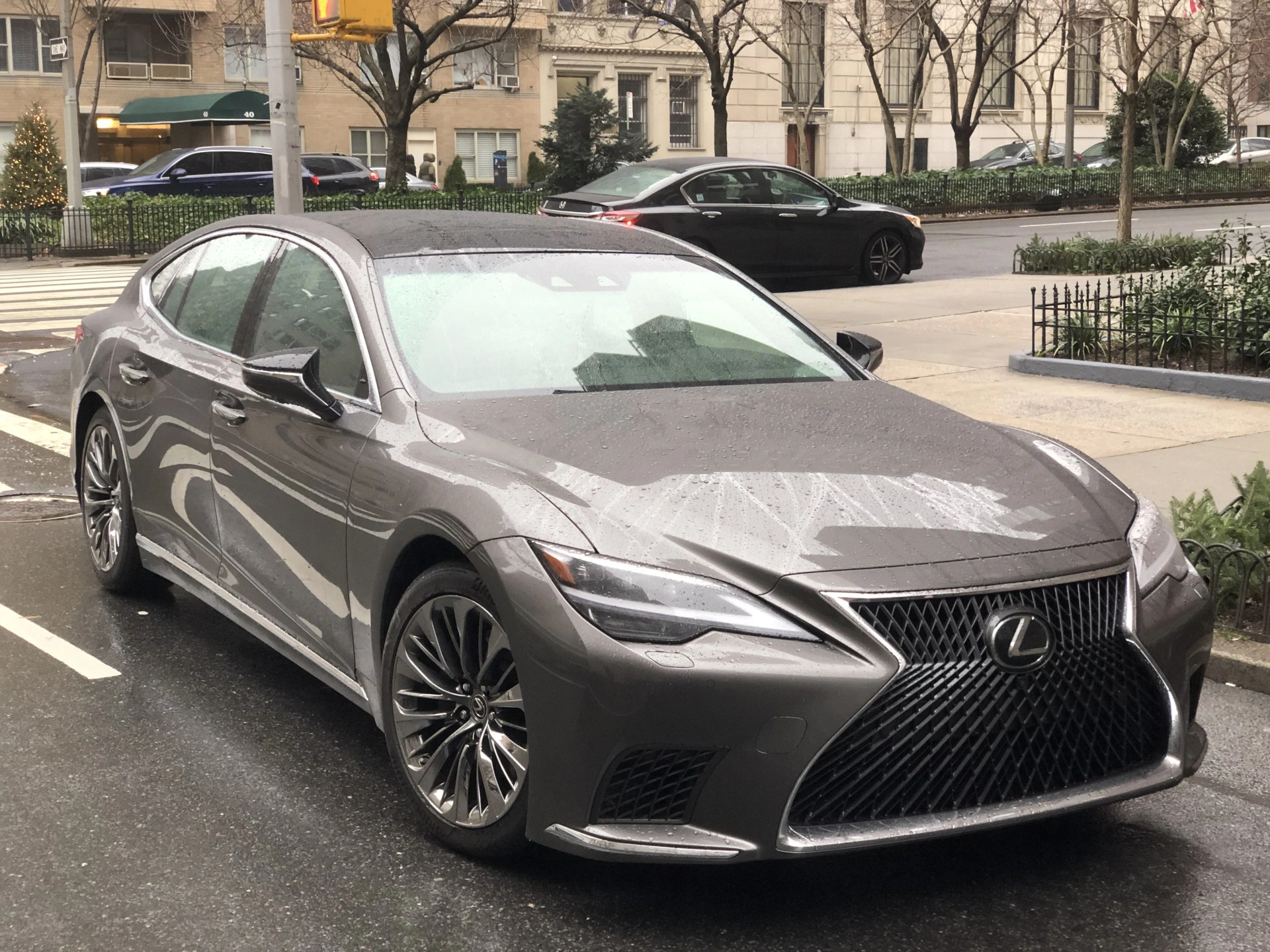
2021 Lexus LS 500
The Lexus LS made a name for itself decades ago by taking on established luxury brands in a unique way: matching their luxury, beating their quality, and serving it up at a bargain price. These days, the LS aims to do the same against the likes of the Audi A8, BMW 7 Series and Mercedes-Benz S-Class, but also brings a new card to the table: a rakish new design language.
But perhaps the LS’s most dangerous foe lies within its own showroom. The Lexus ES looks almost as attractive; indeed, its more conventional three-box shape can arguably seen as even more appealing, in a classical sense. While it’s 10 inches shorter in both length and wheelbase, the ES beats the LS in headroom and legroom, both front and rear. Unless you drop big bucks the LS’s Executive package with kiriko glass trim — a feature that costs nearly $24,000, and requires $5,000 in additional options on top — the ES’s interior is nearly as nice. And the ES starts at $40,000 and costs around $50K well-equipped, versus the LS’s $76K starting price that can inflate well past $100K. If I were looking at Lexus because I wanted a great deal in a luxury car, I know where my money would go.
Pros: Looks great, glides along smooth as ice, Lexus quality
Cons: Traditional Lexus buyers would be better-suited with an ES, buyers who want sportiness to match the looks would be better-suited looking elsewhere
Price as Tested: $85,810
Will Sabel Courtney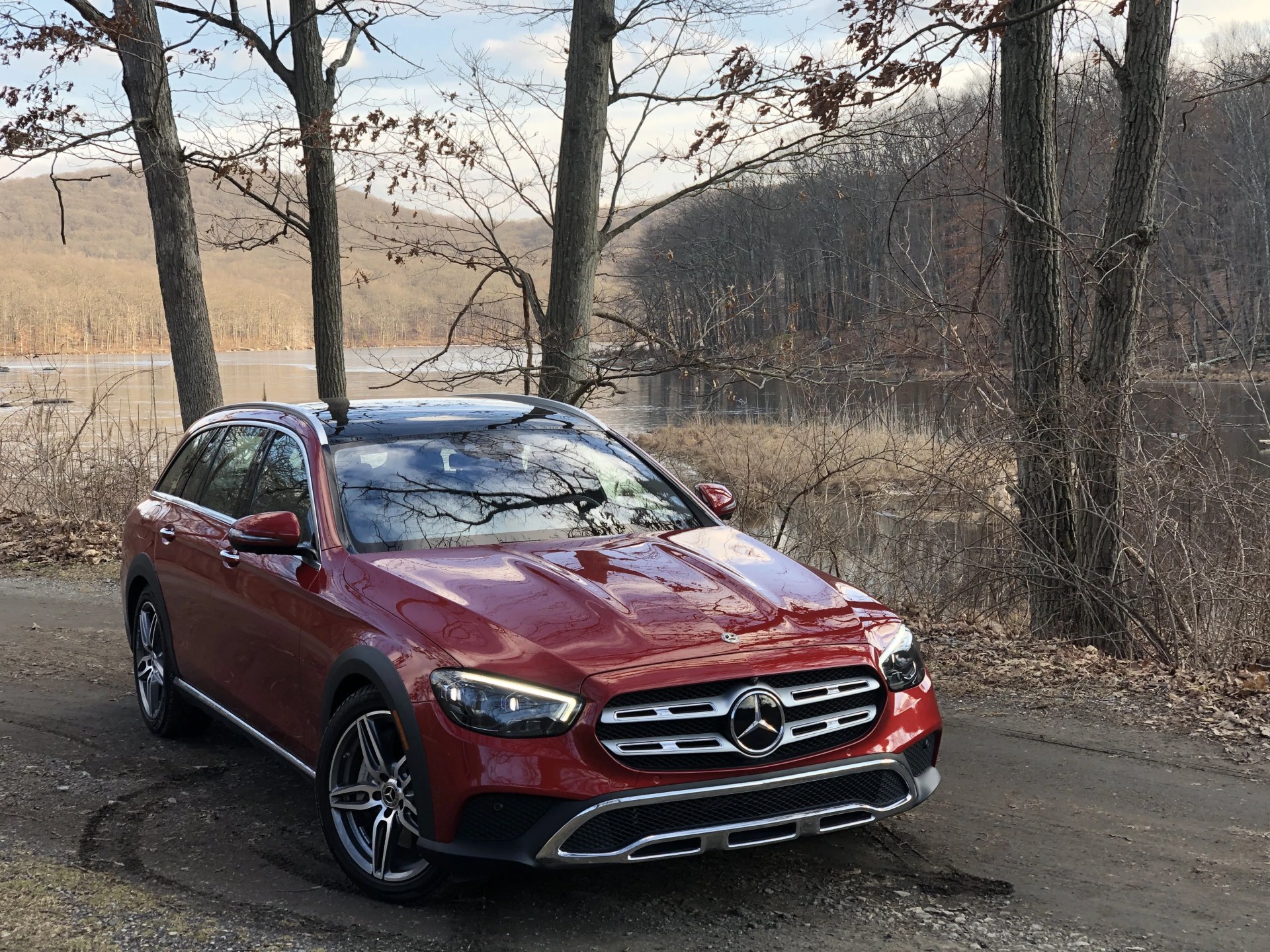
IMG_0840.JPG
Will Sabel Courtney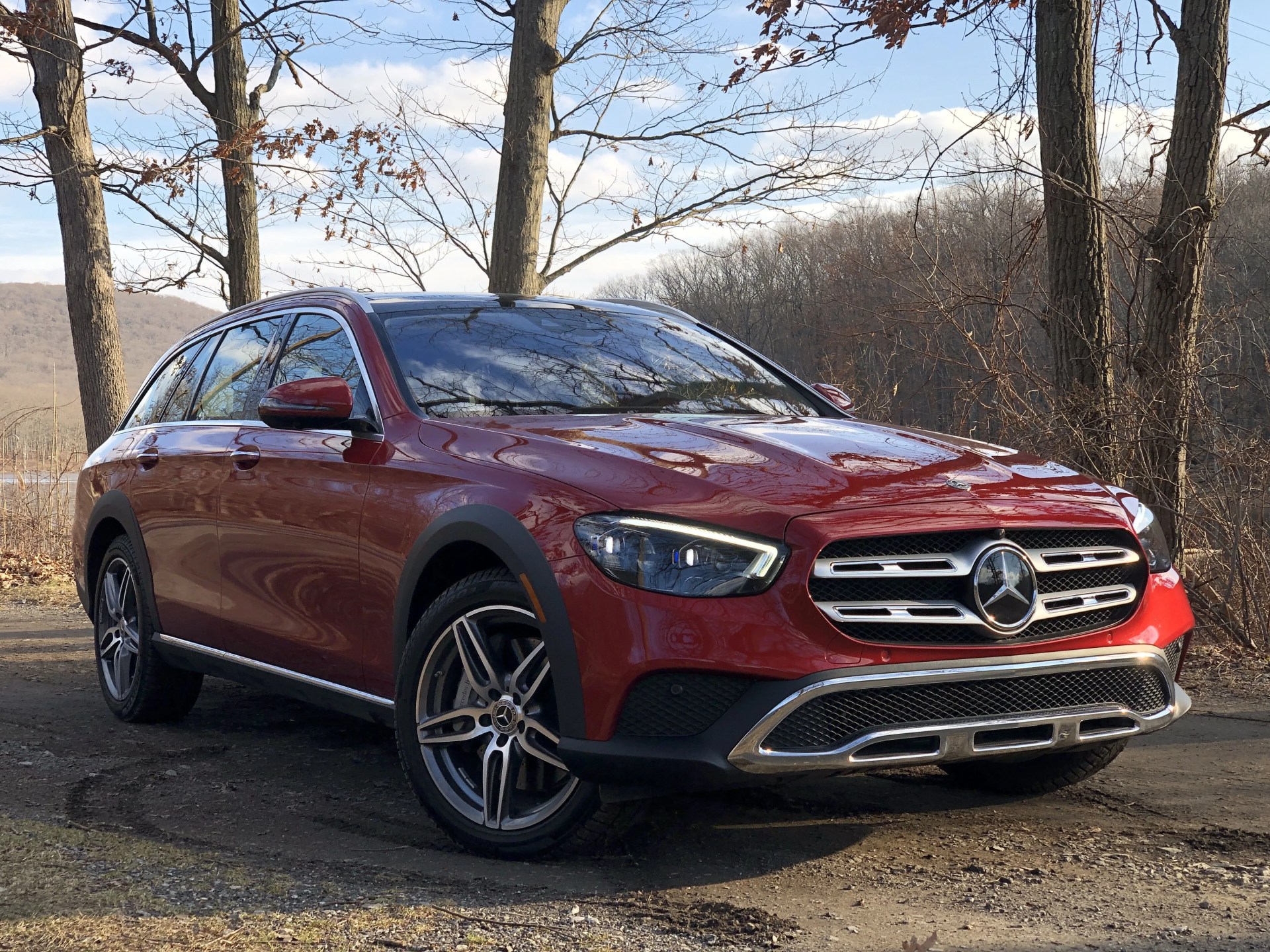
2021 Mercedes-Benz E450 All-Terrain
Much like “Autopilot” and “Fulls Self-Driving” over at Tesla, “All-Terrain” is one of those terms that shouldn’t be taken literally in the context of Mercedes-Benz’s latest E-Class wagon (and, regrettably, now the only way to buy a Mercedes station wagon in America unless you can splurge on an E63). A far better term would be, say “all roads” — but that comes painfully close to Audi’s moniker for this car’s direct competitor, the A6 Allroad.
Choosing between them might largely a matter of brand preference — and indeed, both offer similarly luxurious cabins, similarly roomy trunks (35 cubic feet for the Benz vs. 30 for the Audi), and similarly comprehensive suites of technology, including active air suspensions that can jack the ground clearance to Subaru-like levels. But the Audi can’t match the Benz’s delightful, natural-feeling steering, and while its turbocharged V6 pits out similar power, it isn’t nearly as smooth as the twin-turbo, electric motor-assisted inline-six found under the Mercedes’s hood. Sure, the Audi looks better from outside, but once on the road, odds are good you’ll prefer the E450.
And if that’s not enough to win your favor, the E-Class packs one more fun surprise: it’s the last station wagon in America that boasts a flip-up, rear-facing third row seat for carting kids (or nostalgic adults with limber limbs) on short jaunts to the beach or up the mountain. —Will Sabel Courtney
Pros: Arguably the perfect all-around car if you’re not obsessed with the need for speed
Cons: Looked better before the 2021 facelift, would look better without the body cladding
Price as Tested: $87,380
Will Sabel Courtney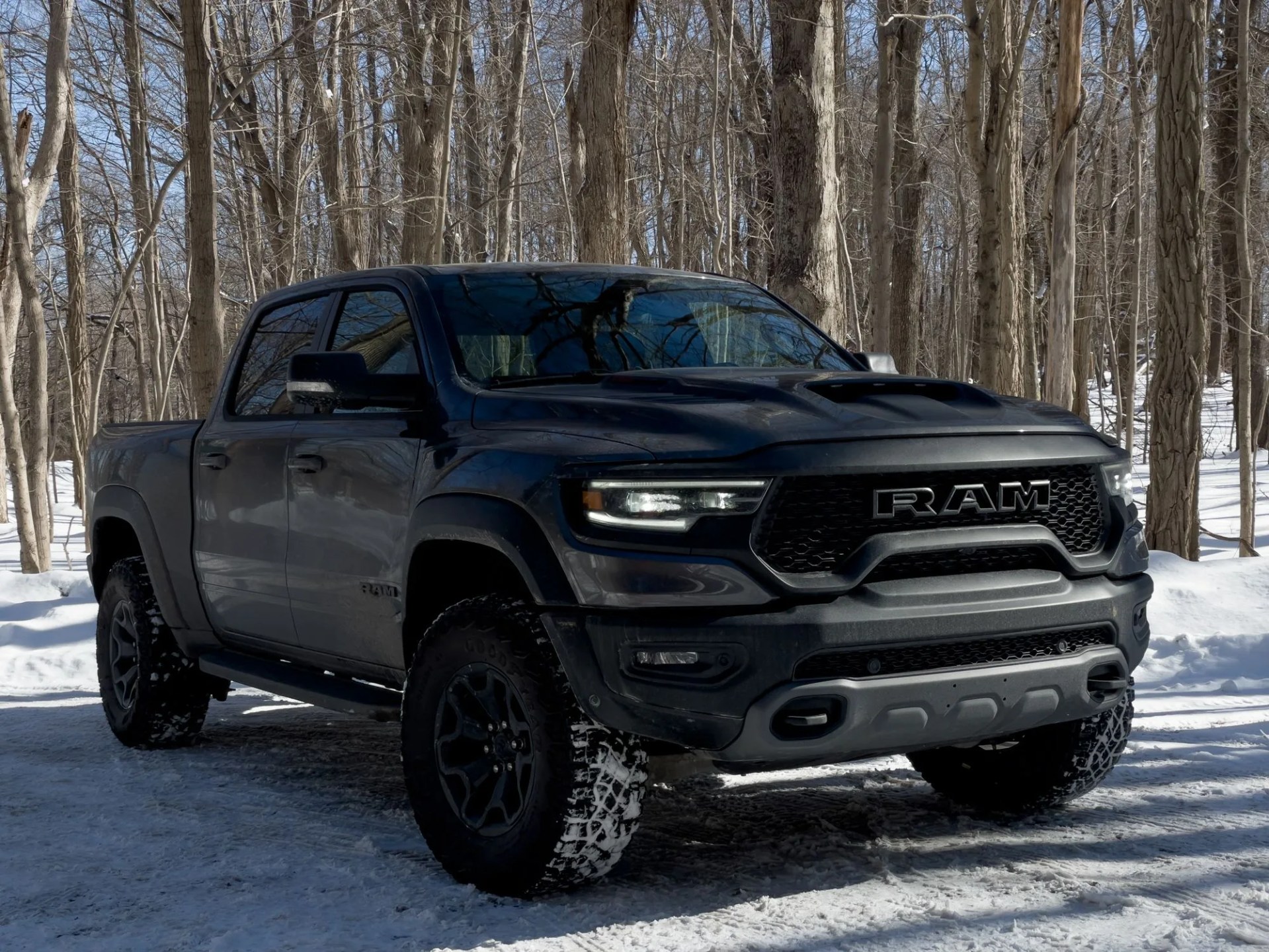
2021 Ram 1500 TRX
During my first spin with Ram’s new apex predator of pickups out in the wide-open deserts of northern Nevada and the piney mountains of Lake Tahoe, I remember thinking, God, this truck would be a nightmare in New York City.
Well, I was right — and I was wrong.
In the former category, well, there’s parking the damn thing. The TRX’s gargantuan proportions make it too large for most garages in a metropolis like Manhattan, and even if you do find one that’ll take it overnight (the city may never sleep, but many of its open-air lots do), you’ll be stuck with a bill that makes the cost of filling up the 33-gallon tank with premium unleaded seem reasonable. And trying to snake through tight spaces — say, between rows of double-parked cars — isn’t exactly a walk in the park.
On the other hand, though, New York’s tire-shredding potholes and other street imperfections went all but unnoticed beneath this Ram’s mighty wheels, and the 702 horsepower of its supercharged Hemi meant it never had an issue merging onto the cutthroat highways that weave through the Tri-State Area. And the interior of my top-shelf model was every bit as comfortable, roomy and versatile as we’ve come to expect from Ram’s latest trucks.
Indeed, the TRX felt more, well, wasted outside the city, where its incredible suspension and mighty engine were left with little to do that a regular pickup truck — or really, a family sedan — couldn’t handle. Tooling down side streets and following traffic on the interstate just felt so tame, so beneath the capabilities of the truck if it wasn’t leading to a trailhead or empty washboard road. To paraphrase Dr. Alan Grant, TRX doesn’t want to be fed — he wants to jump. —Will Sabel Courtney
Pros: Pretty much the single most capable all-around vehicle you can buy today; shares a name with the coolest dinosaur
Cons: Like a supercar, you’ll only use a fraction of its capability most days, and you’ll feel guilty about it; also like a supercar, you’ll feel guilty about the gas mileage
Price as Tested: $87,670
Will Sabel Courtney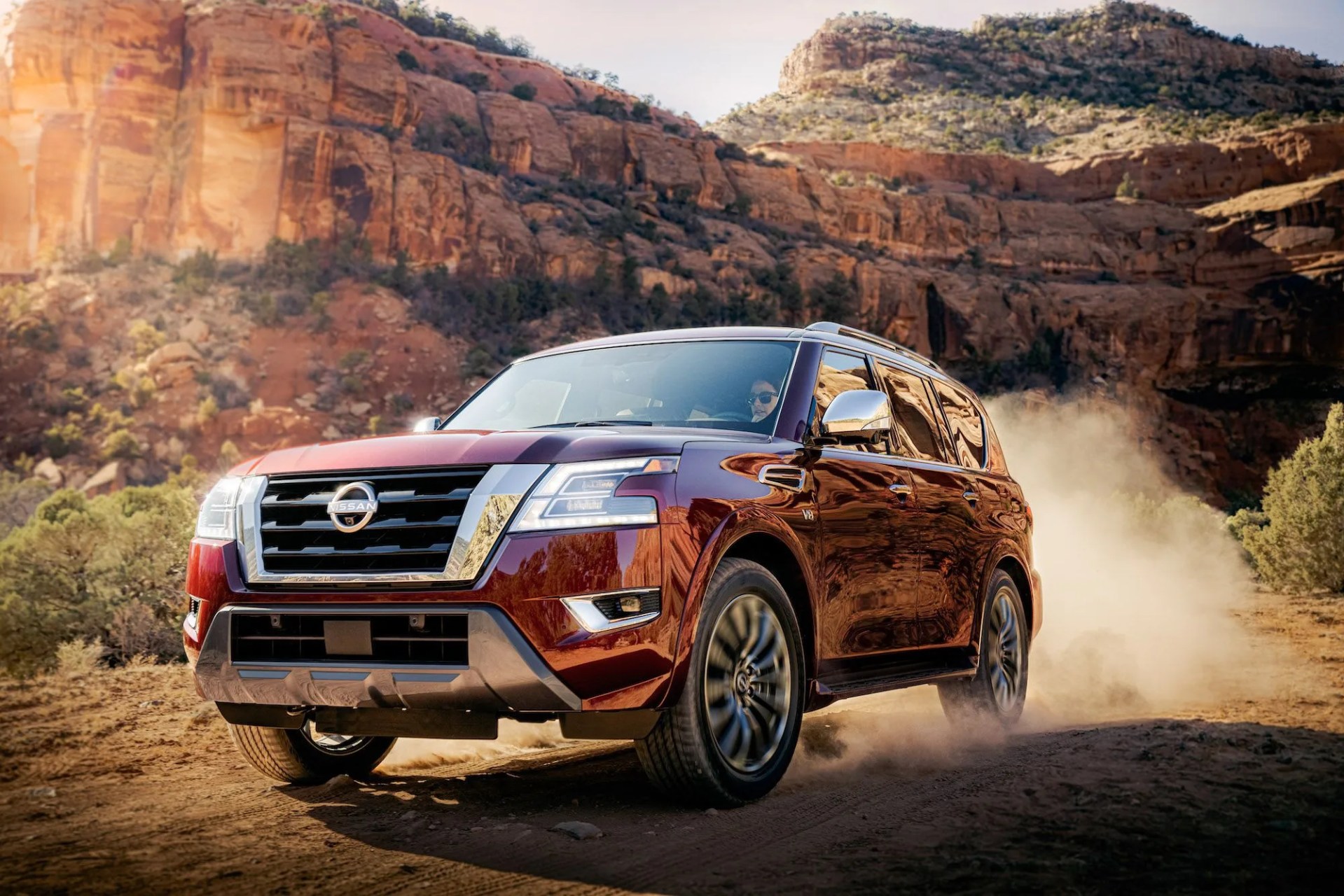
Nissan Switch
Nissan Switch is an all-inclusive service. The Select plan offers access to the Altima, Rogue, Pathfinder and Frontier. The Premium plan includes a broader selection of cars and the GT-R for an additional $100 per day. Buyers have unlimited switches.
Availability: Houston, TX
Starting Price: $699 per month (plus $495 activation fee)
Nissan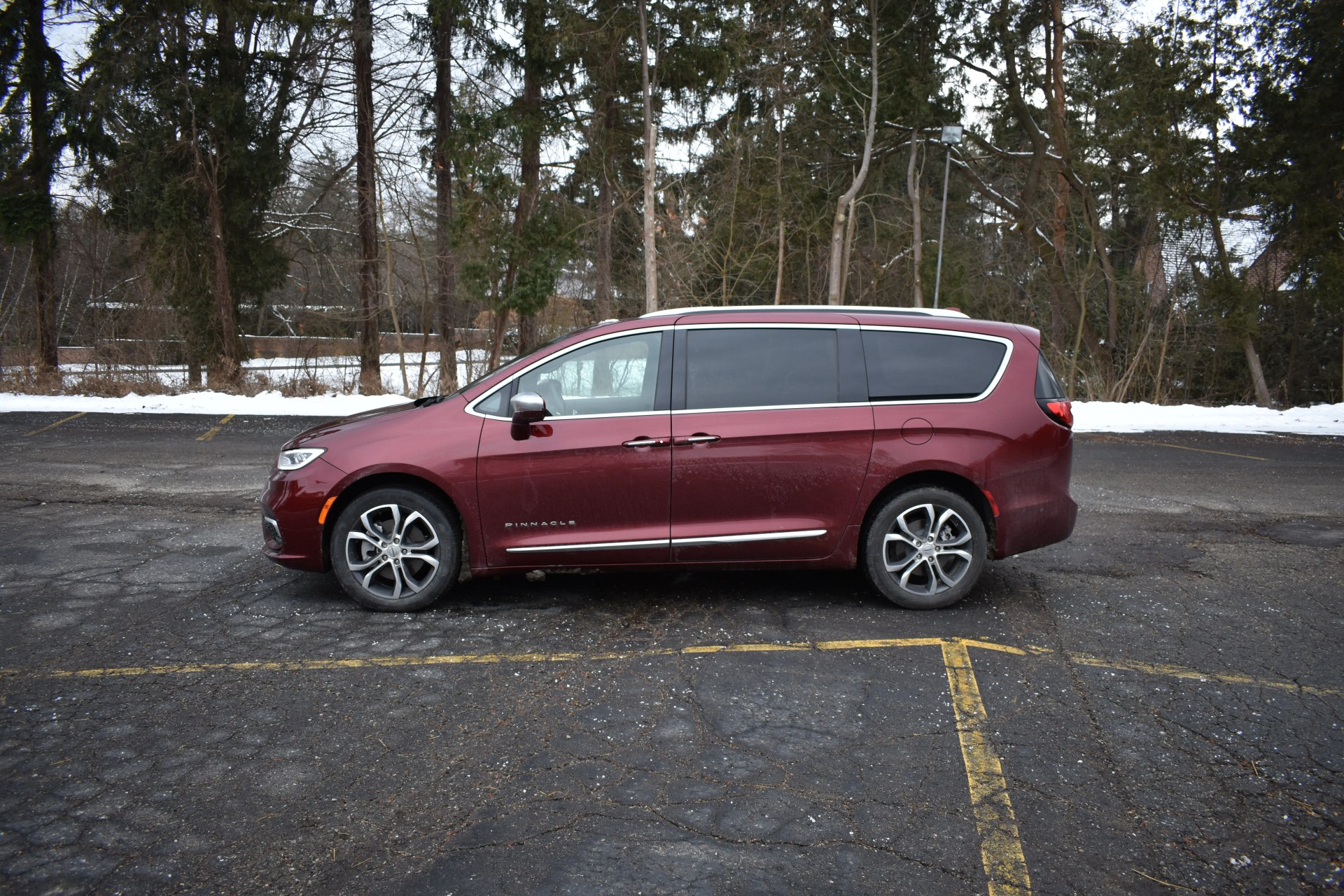
2021 Chrysler Pacifica Pinnacle AWD
Chrysler’s Pacifica minivan is heavily refreshed for 2021. FCA’s great innovation this year was figuring out how to incorporate both all-wheel-drive and the Pacifica’s Stow-N-Go seats, which leave a flat cargo floor. The innovation was so great, in fact, Chrysler didn’t wait — they even added it to late-2020 models. Another significant change was the new, range-topping Pinnacle trim, which makes this perhaps the first luxury minivan in America.
I drove the Pinnacle AWD Pacifica in its natural element, hauling kids and copious amounts of stuff over the holidays in inclement weather. The AWD doesn’t turn the Pacifica into a power-sliding weather annihilator. It did help me get going in about 1.5 inches of snow; trouble is, like all four-wheel-drive, it doesn’t help you stop, and the AWD Pacifica weighs the same as a full-size truck. I still skidded in a few slick spots. Personally, I’d choose the FWD hybrid — which gets 30 mpg combined instead of the 18.1 I averaged over a week — and slap on some great snow tires.
Some of the finishes in the Pinnacle trim are downright opulent. You get a microsuede headliner and quilted Nappa leather on the seats; it even comes with little lumbar pillows for extra comfort, like a Maybach.
But that trim starts at $53,390, and my tester was priced out to $54,885. That’s significantly more expensive than a luxed-out, Prestige Package Kia Telluride. And I’m not sure why you’d go minivan unless effortlessly carting six-foot-tall plush dinosaurs is something you do on the regular. —Tyler Duffy
Pros: luxury SUV finishes, space for people and gear
Cons: touchy throttle, underwhelming fuel economy, body style
Base Price: $53,990
Tyler Duffy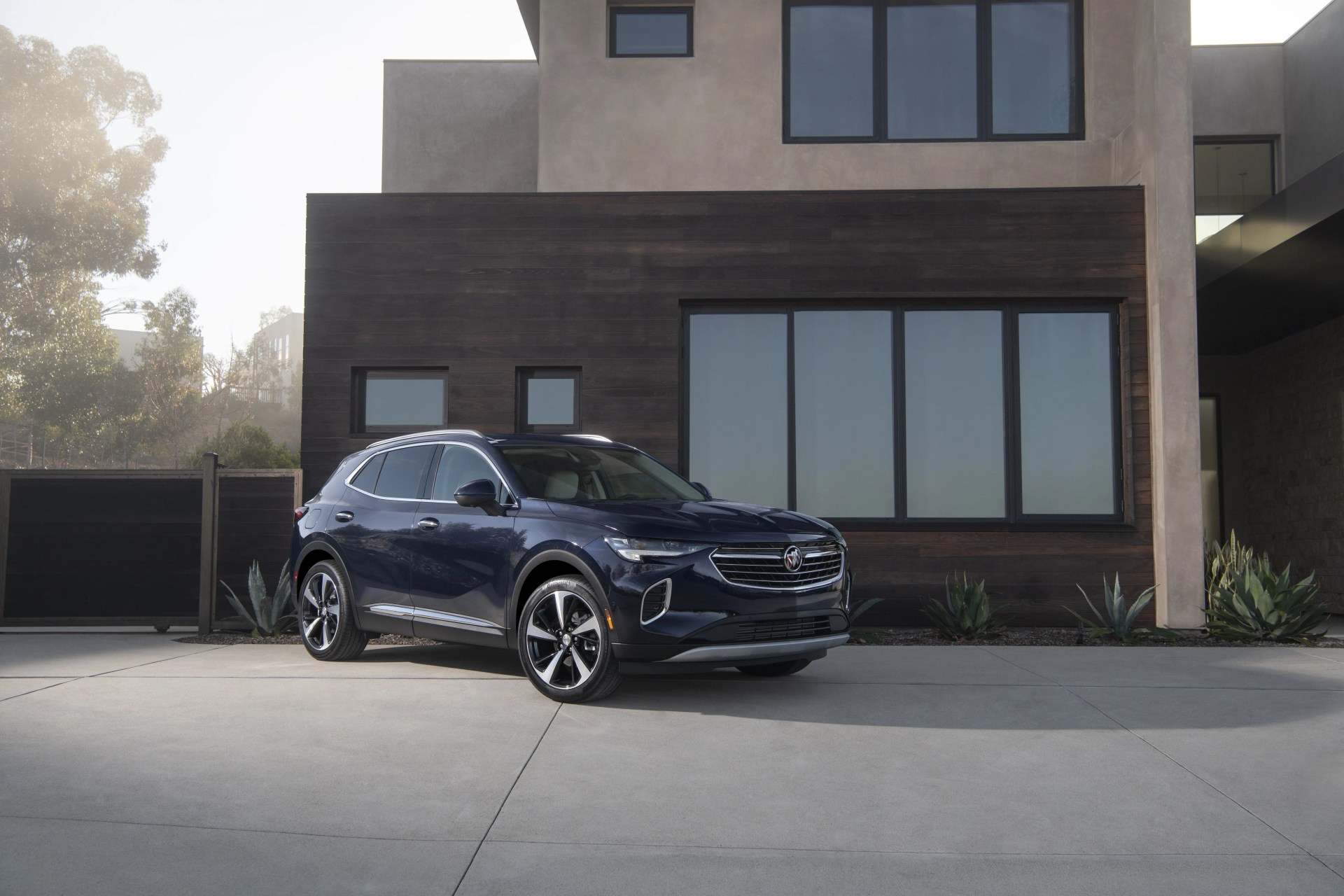
Buick (2030)
Buick has announced plans to fully electrify by 2030 ahead of General Motors going all-electric by 2035.
Jessica Lynn Walker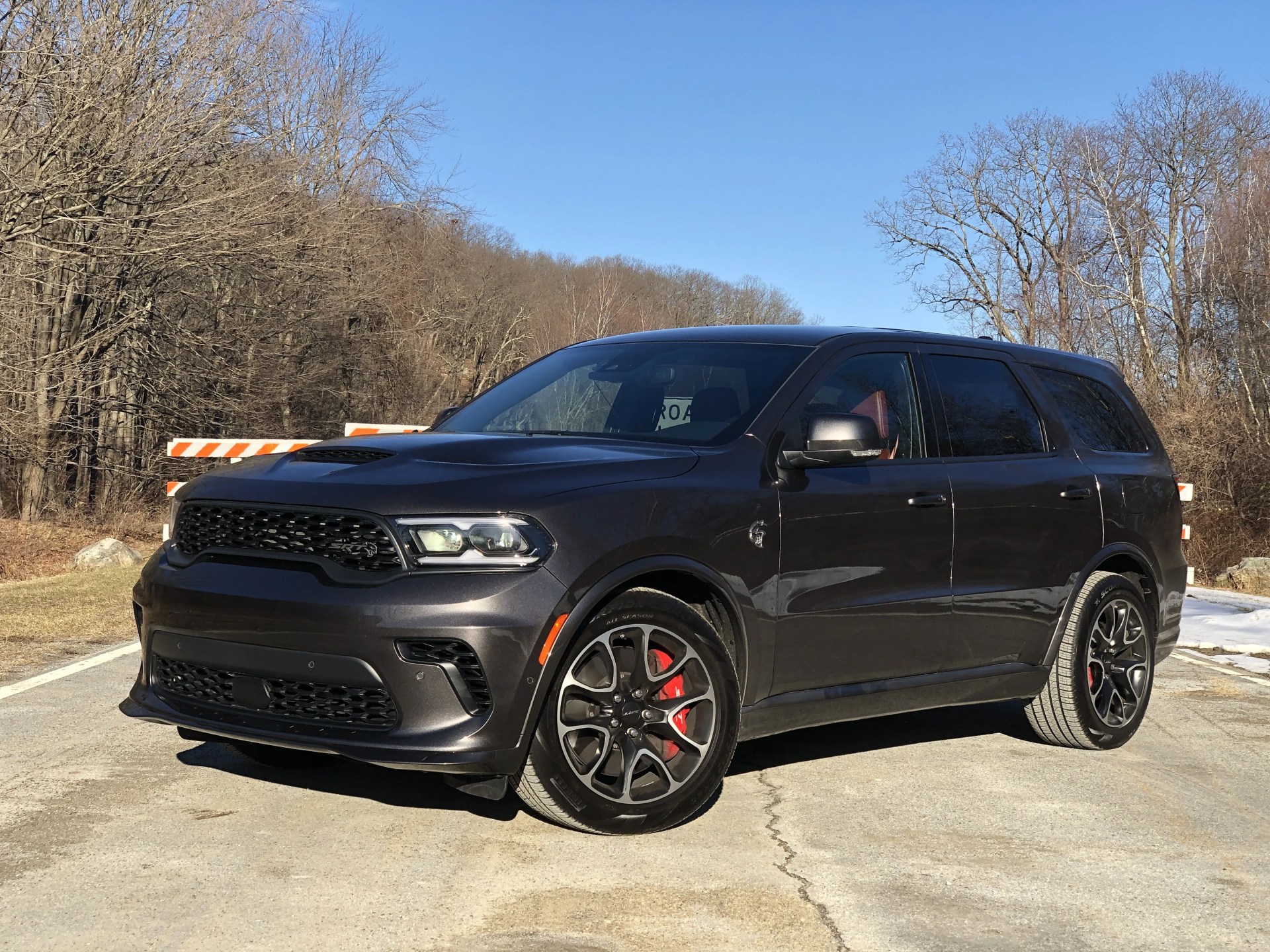
2021 Dodge Durango SRT Hellcat
Given how much I dug the Durango SRT 392, I was excited to lay hands on the even more potent Hellcat version. That said, a few hours driving it around upstate New York left me less than thrilled. The suspension feels as floaty as an old Cadillac’s in its default Street mode; I wound up struggling with the onset of car sickness from the bobbing. (The best remedy was to set the dampers to Track, the stiffest setting.)
Obviously, there are no complaints about what’s under the hood in terms of output; I didn’t have a chance to confirm Dodge’s claimed 3.5-second 0-60 mph run, but there’s no doubting that it’s stupidly quick for a three-row sport-ute. The revised interior shared with other 2021 Durangos brings an improved infotainment system, but it’s still in the middle of a cabin that could learn a thing or three from the latest Ram.
And that’s perhaps the biggest issue: the juice just doesn’t seem worth the squeeze. A 710-horsepower Durango is still a Durango at its core, which means it’s still a 10-year-old SUV; this one just happens to have a pricetag pushing $100,000 when equipped like mine. The 392 is $18,000 quicker, just a bit slower, matches the Hellcat in towing and seating and looks almost identical; hell, the R/T with Tow and Go package also packs the same looks, towing capacity and seats, still makes 360 horses and 390 lb-ft, and adds in true four-wheel-drive with low range for about $55,000. —Will Sabel Courtney
Pros: Gnarly power, very usable interior
Cons: Truly awful gas mileage, not smooth, way too expensive
Price as Tested: $94,950
Will Sabel Courtney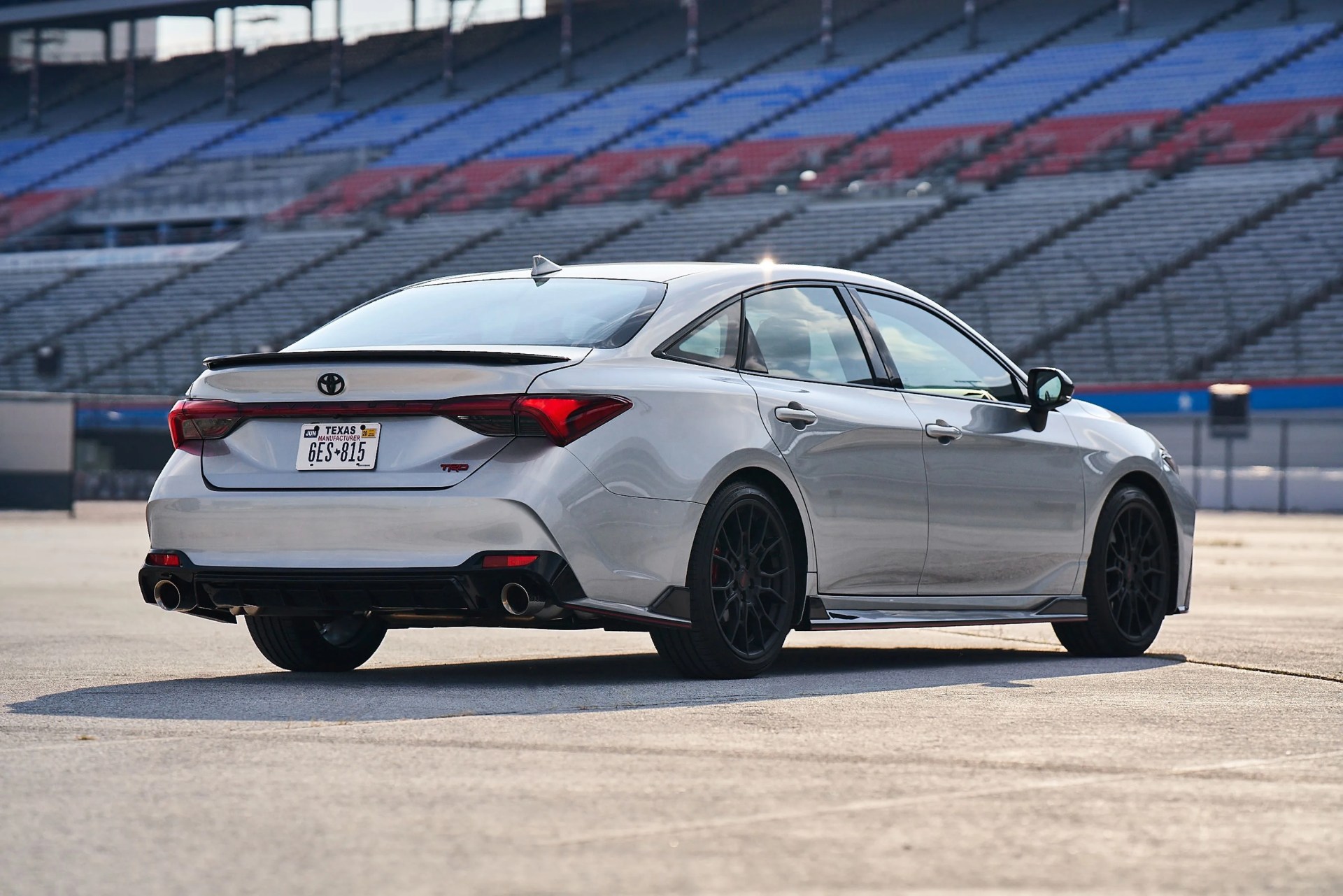
20_AvalonTRD_CelestialSilverMetallic_0031.jpg
Toyota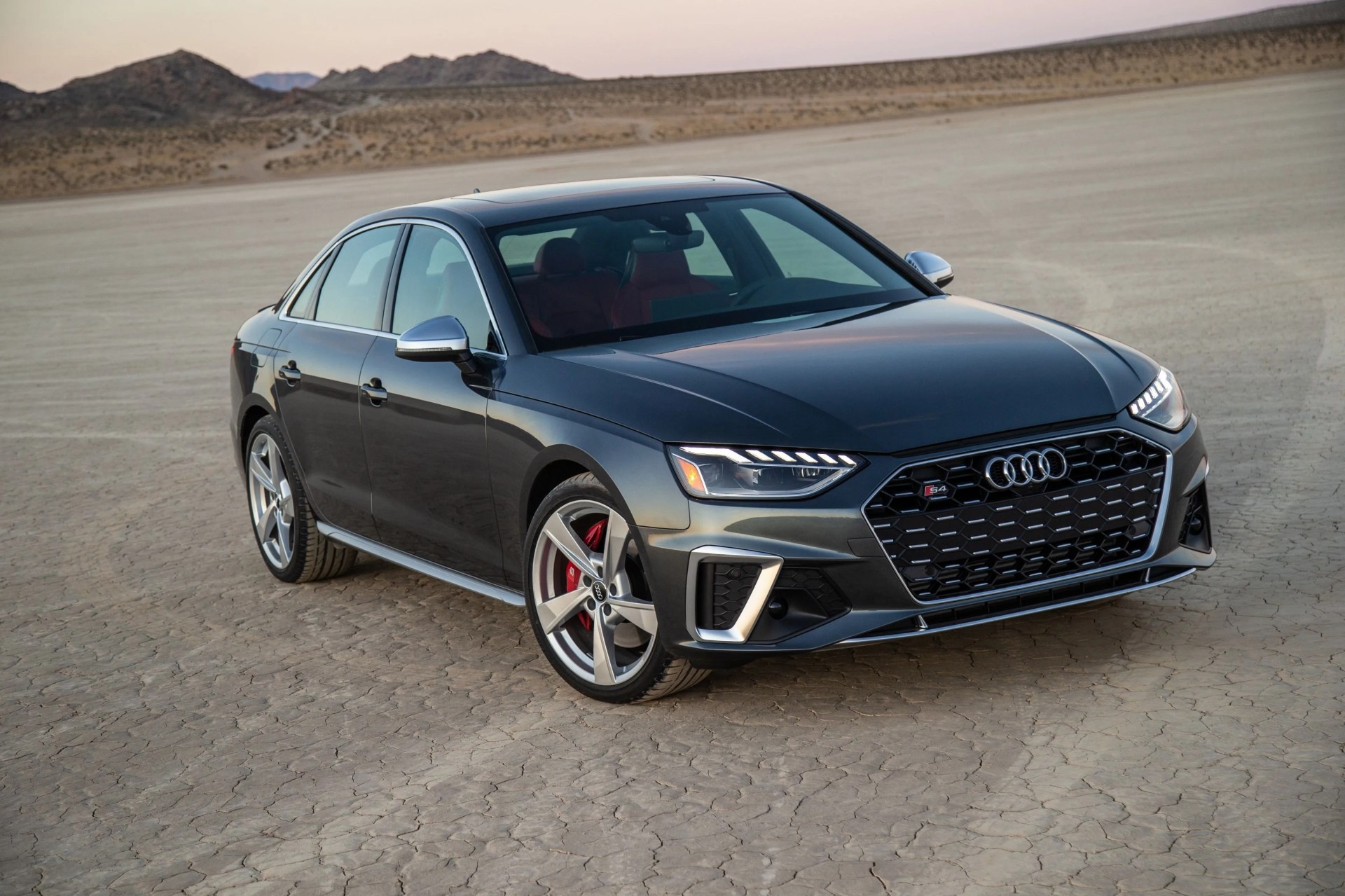
2020 Audi S4 Prestige
In case you hadn’t caught on by now, Audi had a lot of new metal they wanted us to lay hands on in recent months. The S4, though, was the least-novel of the bunch; it’s a mild facelift of the model that’s been around since 2015, which wasn’t exactly a sea change over the previous generation A4/S4. Compared with the likes of the RS Q8 or RS 6 Avant, settling into the 2020 S4 feels like climbing into a brand-new car from the Obama years.
Still, there’s plenty to like here. The turbocharged V6 delivers what I call “Goldlocks power” — enough to make it fast, but not so much as to put max performance out of reach in the real world. The S4 is nicely sized for urban driving, though as with many of its competitors, that back seat is better left for pets and parcels if the front occupants are over six feet tall. And the handling is every bit as lively as you’d expect from an Audi S-car. Whether it’s worth the price tag of a fully-loaded one — which starts to push into BMW M3 territory — is a different story. —Will Sabel Courtney
Pros: Peppy and fun to drive every day, splits the difference between a Golf R and an S8
Cons: Not as stylish as it used to be, options can add up quick
Price as Tested: $65,890
Audi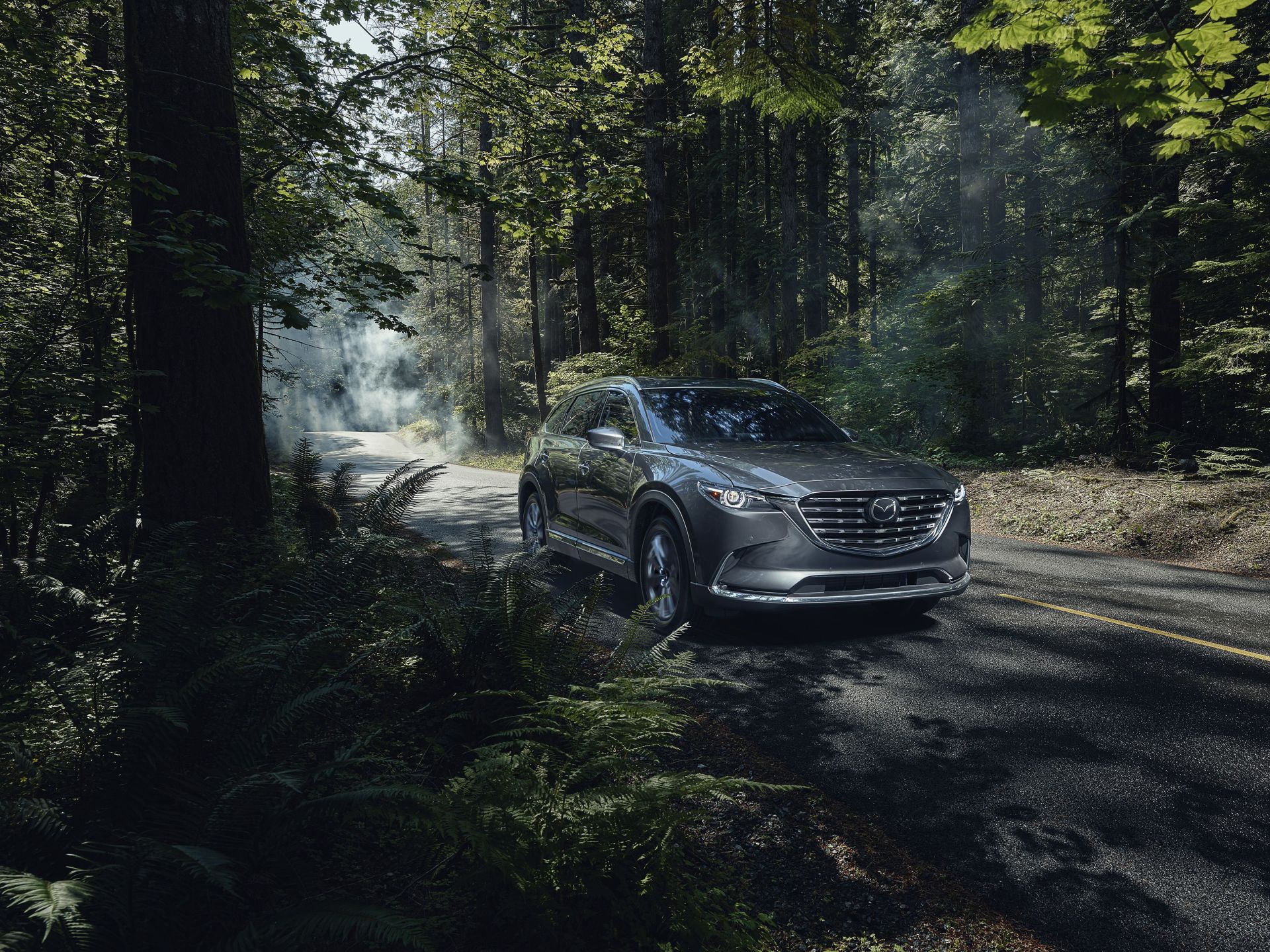
2021-CX-9_01-2.jpg
Mazda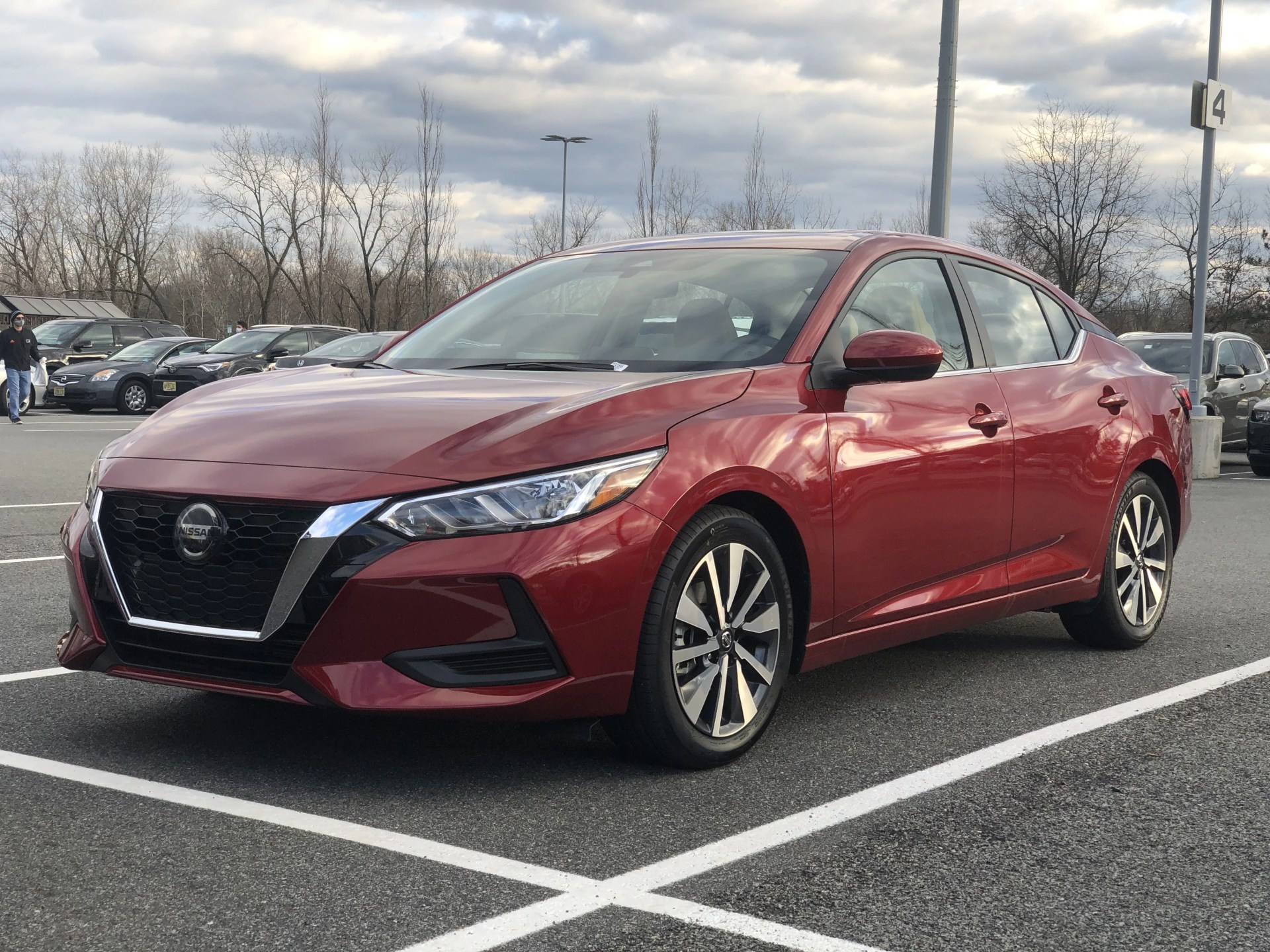
2021 Nissan Sentra SV
Fun fact: In high school, I took my driver’s test on my family’s red Nissan Sentra. Remarkably, there’s still some pieces of the new one that feel familiar; the switchgear and fonts bear a clear relation. In some ways, the new model feels like a bit of a letdown. Power has climbed from 126 to 149 hp over the years, but weight has also jumped from around 2,700 pounds to more than 3,000. And the effective five-speed manual of my high school car is no more; the only transmission is a CVT.
But in most respects, it’s a clear upgrade. Obviously, you’d expect that to happen over the course of 15-plus years, but even by the standards of modern-day compact cars, the Sentra has some standout features going for it. The quilted leather that comes with the $2,270 Premium Package looks worthy of a luxury car, and there’s good room inside, even with my six-foot-four frame in front. The dashboard layout manages to be both attractive and intuitive, with a clean, simple touchscreen and easy-to-use buttons. And I saw 36 miles per gallon over a 40-mile blast that combined fast highway driving and urban scooting around, which ain’t bad at all. —Will Sabel Courtney
Pros: Unique looks, great interior, not a bad deal
Cons: Uninvolving to drive, doesn’t quite stand out from the competition
Price as Tested: $24,060
Will Sabel Courtney
2021 Audi SQ7 Prestige
Audi’s S6 and S7 may have downsized from eight cylinders to six, but you can still find a V8 under the hood of the SQ7, thank goodness. That engine cranks out 500 horsepower and 538 lb-ft of torque here, making the SQ7 the most affordable way to break into five-digit pony figures in the current Audi lineup (and, indeed, the most affordable way to get more than six cylinders in a 2021 Audi, period).
While it’s happy to burble along in the background as peaceful as can be when you’re keeping things low-key, a delightful burst of thrust (and a muted but still tasty V8 roar) is always just a flex of the right foot away. Toss it into a turn, and it’s not quite as nimble as an RS Q8; of course, it hasn’t benefited from the tuning expertise of Audi Sport that it takes to create an RS, so that’s no surprise.
Still, unless you’re expecting to stomp Porsche 911 Carreras off the line and keep up in the turns, the SQ7’s particular set of skills — more space, a low-key design — make it a better fit for most buyers. The fact that it starts at $30,000 cheaper is just high-quality icing.
Highs: More lowkey and utilitarian than an RS Q8, lots of power for a “reasonable” price
Lows: Those who really want a performance SUV will still crave the RS Q8’s added capability
Price as Tested: $107,690
Will Sabel Courtney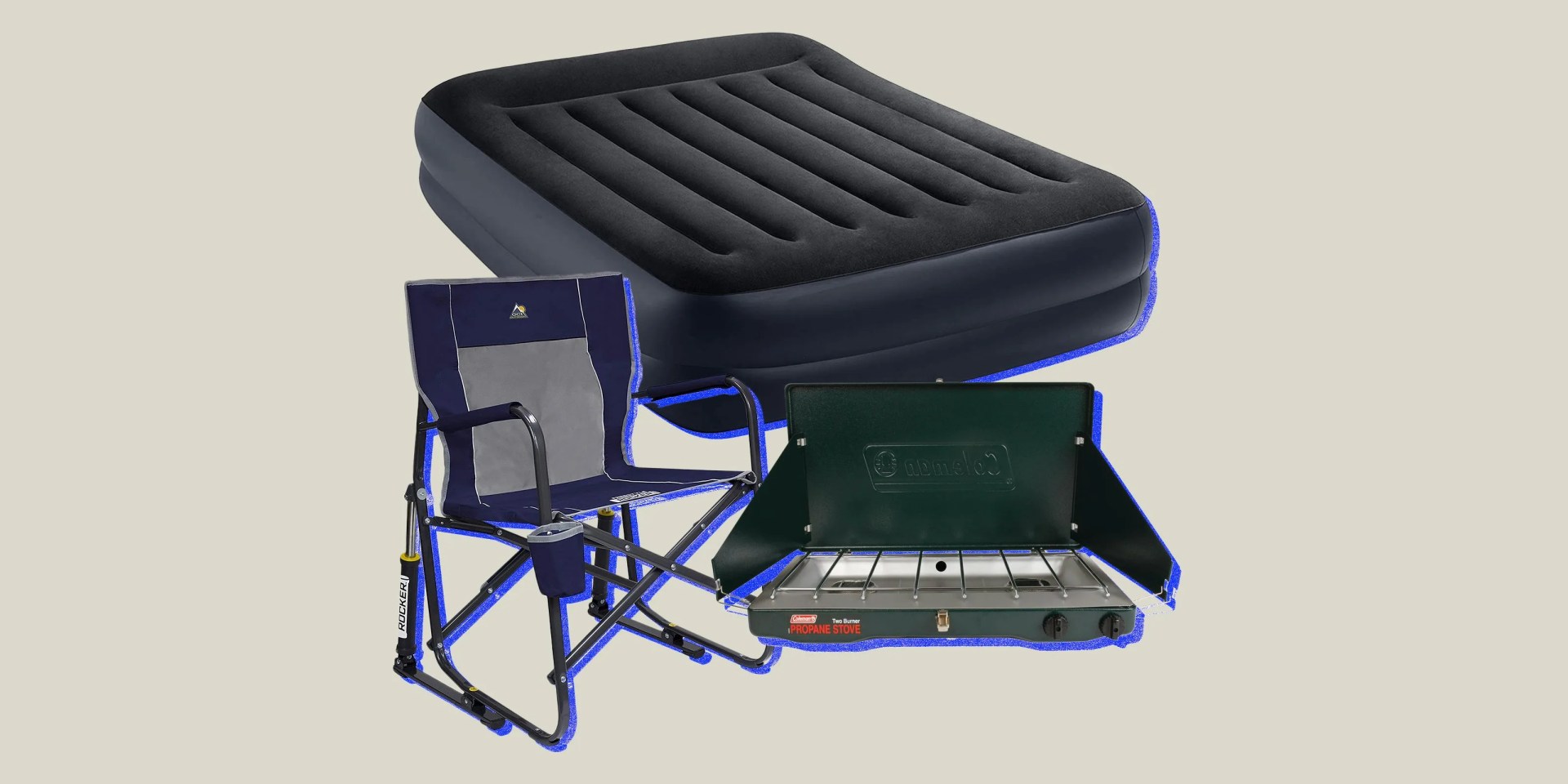
The Gear You Absolutely Need for Car Camping
Car camping makes getting away easy as pie. These items will make it even tastier.
GCI Outdoor, Amazon, Walmart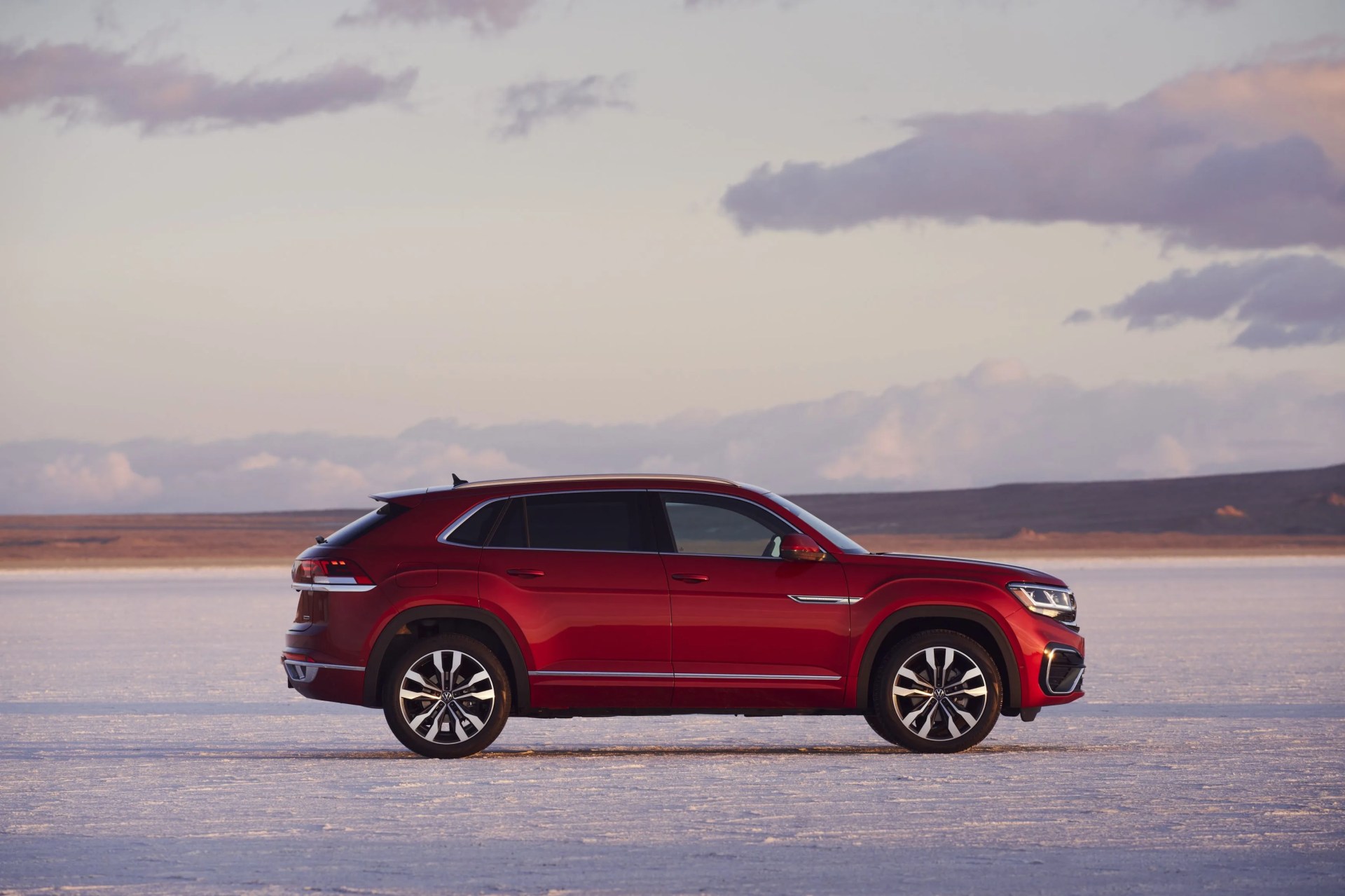
2020 Volkswagen Atlas Cross Sport 2.0 SEL 4Motion
Perhaps you, like me, are sick to death of those Paul Giamatti / Kieran Culkin ads for the VW Atlas Cross Sport that seem to show up during NFL games as often as forward passes. (Just where are they going?) That, however, shouldn’t be held against the Cross Sport itself, which is a fine family crossover for those who value style a little more than cargo space.
Like most VWs these days, especially those made in America, the Cross Sport doesn’t quite have that same carved-from-stone feel that once defined Volkswagens, but it still feels as well-made as any of its competitors in this class. There’s plenty of room in both rows, and the turbo four’s front-loaded torque curve arguably makes it a better choice for real-world driving than the naturally-aspirated V6 that costs $1,800 more. And the all-screen “virtual cockpit” dashboard that’s trickled down from Audi to VW brings a touch of added class and brightness to an otherwise-dark interior. The midsize crossover category is a tough one these days, but if you’re looking to stand out of the pack a bit, the Cross Sport is worth a look. —Will Sabel Courtney
Pros: Roomy, adequate power for what it is, solid infotainment
Cons: If you love to drive, you might need to look elsewhere
Price as Tested: $43,315
Will Sabel Courtney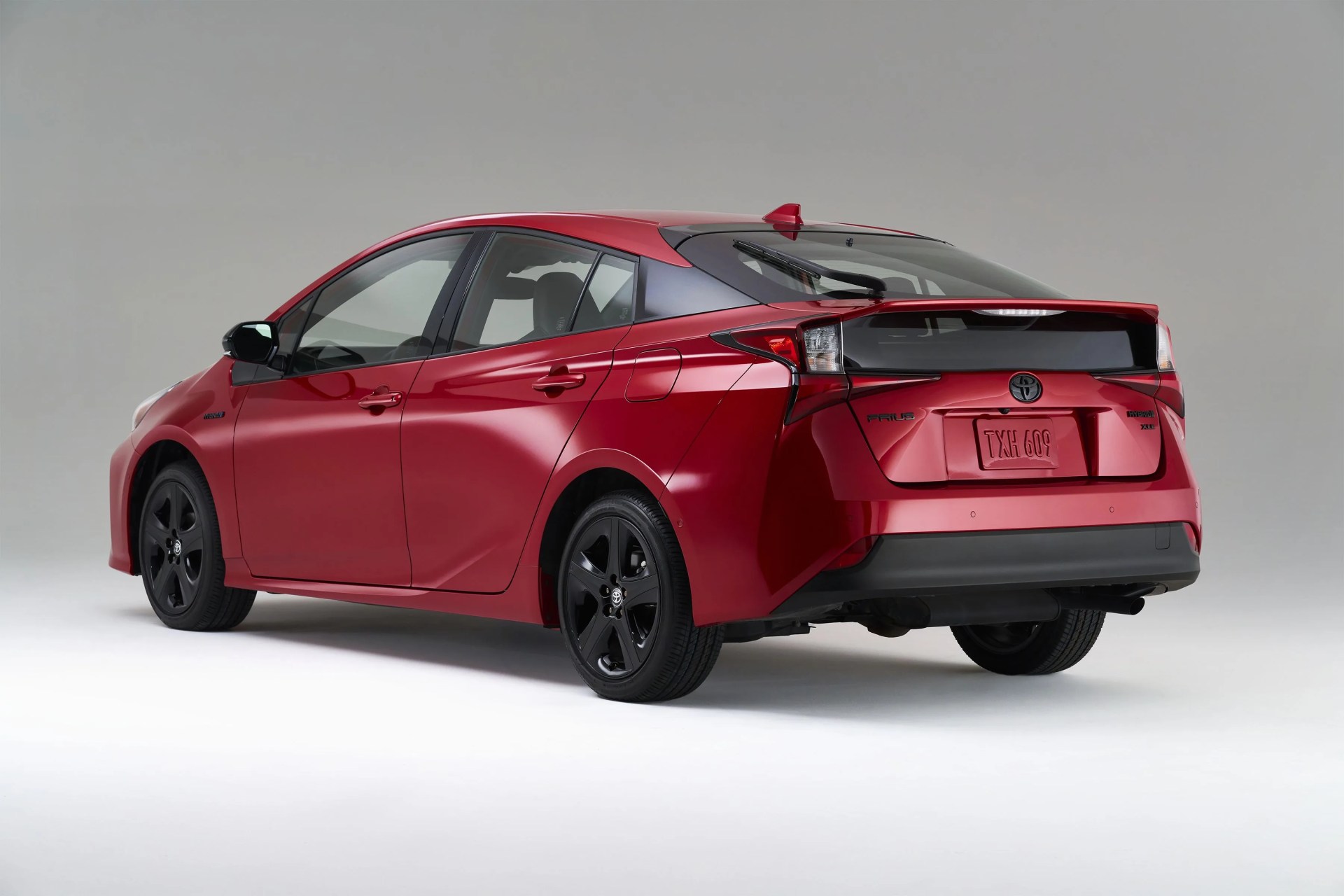
2021 Toyota Prius 2020 Edition
The “2020 Edition” Prius, oddly arriving for the 2021 model year, celebrates the hybrid’s 20th year in the U.S. market. Toyota will build 2,020 of them. They announced it last May…which was far enough into 2020 to realize people might balk at that name. And that’s before the general weirdness of a limited run Prius.
The 2020 Edition is an appearance package based on the XLE Prius, featuring trendy black wheels and blacked-out badges. You also get a body-color spoiler. Toyota describes it as “sporty and elegant, with just a touch of mischief.”
The 2020 Edition does look good…by Prius standards. My Supersonic Red version elicited appreciated comments from my mother and my son’s teacher, who liked the color (and didn’t recognize it as a Prius).
However, it’s still very much a Prius behind the wheel, with a droning CVT and a punchless 121-horsepower engine. You don’t get Apple CarPlay in the XLE trim; you do, however, get a foot-operated parking brake pedal that jabs you in the shin each time you enter the vehicle.
The virtue of the Prius is its fuel economy — a thrifty 52 mpg combined. But the beauty of 2021 is there’s no need for eco-masochism. For the $32,043 my tester costs, you can get a 208-horsepower Camry Hybrid. Leave the Toyota family, and you could get an excellent Honda Accord Hybrid or Hyundai Sonata Hybrid. That sum is also enough to eliminate combustion with a Hyundai Kona Electric. So why get the Prius?
Pros: 52 mpg, reasonably practical hatchback
Cons: Boring and underpowered, no Apple CarPlay / Android Auto, wonky cabin layout
Base Price: $29,875
Toyota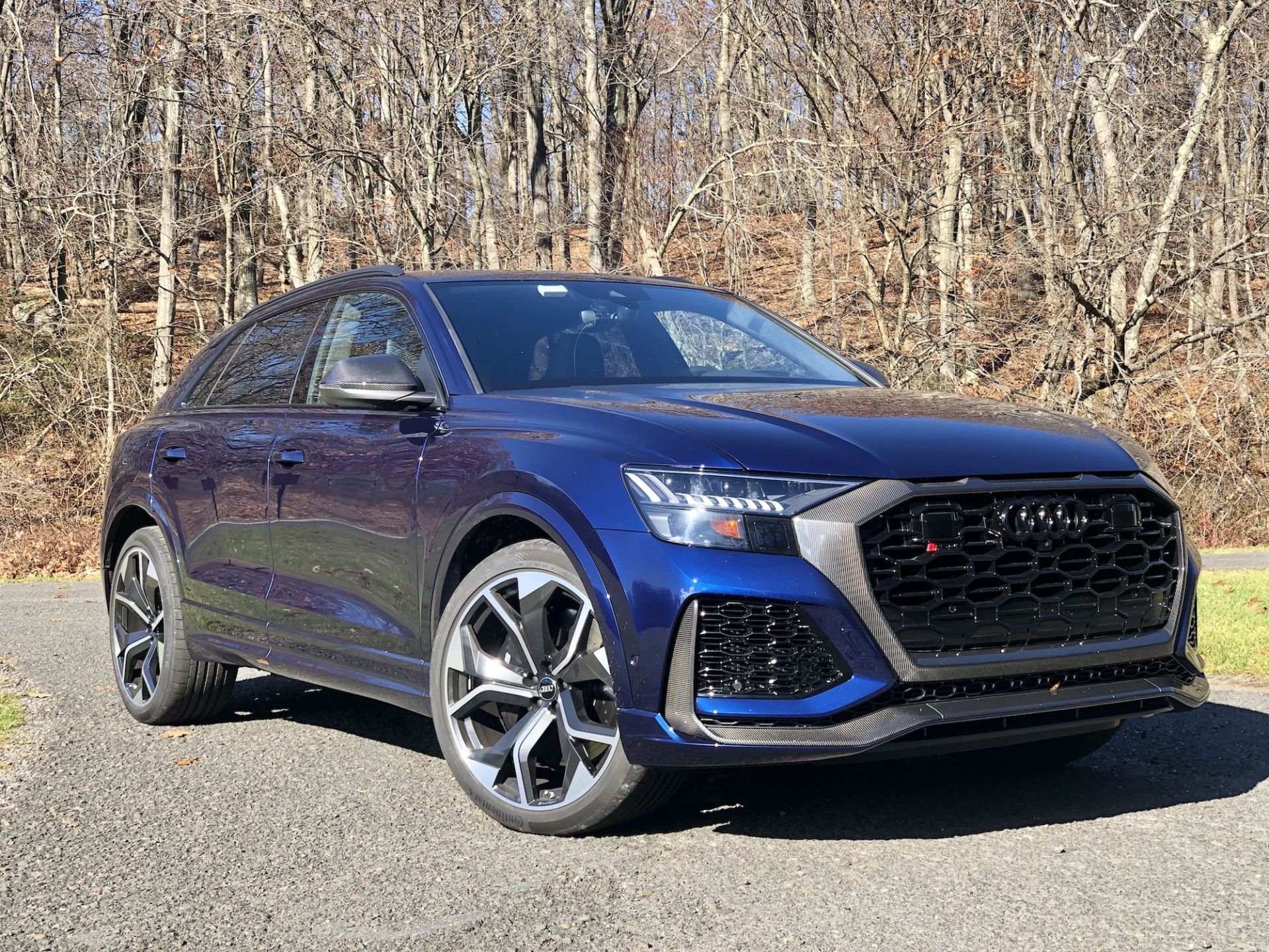
2021 Audi RS Q8
When GP first drove the RS Q8 on the Canary Islands, our writer described it as “blur[ring] the dotted yellow line between sports car and SUV as well as any vehicle could.” The Tri-State area might make for a more banal backdrop, but there’s no arguing that the vehicle itself remains an exceptional piece of engineering
Like the related Porsche Cayenne GTS, the RS Q8 strikes an excellent balance between a comfortable ride and crisp, sure-footed handling, tackling corners with a verve that belies its size and height. Unlike the Cayenne (or the Lamborghini Urus), however, Audi’s four-door-coupe-utility-vehicle looks damn good from any angle, especially in Navarra Blue with the Carbon Optic appearance package.
Indeed, the RS Q8 is so good, I almost found myself debating whether I’d rather have it or the RS 6 Avant if I had the choice. While the lighter, lower-slung wagon beats the crossover on performance, both vehicles are so capable, you’ll only come close to accessing their full performance perhaps 1 or 2 percent of the time. And the RS Q8 has the advantage of greater ground clearance for those occasions when you have to go a tad off the beaten path…or when you hit those nasty potholes that mark so many of our American roads.
I’d still take the RS 6 Avant. But the fact that this car nerd even had the debate at all goes to show just how impressive the RS Q8 is. —Will Sabel Courtney
Pros: stunning performance, good looks, added capability of an SUV
Cons: the RS 6 Avant exists
Price as Tested: $135,740
Will Sabel Courtney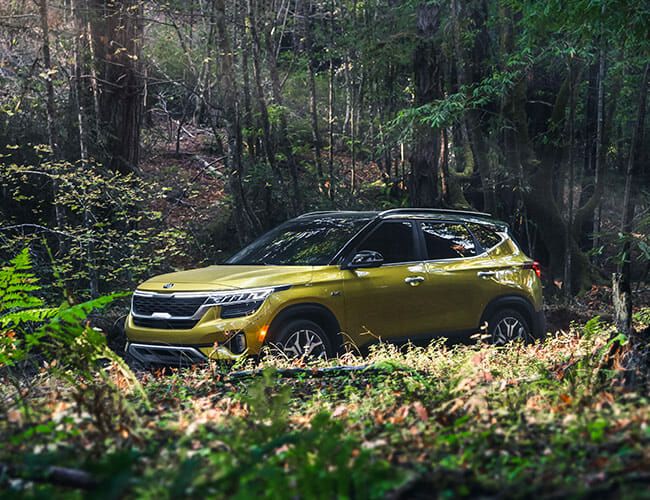
These Are the Best Cars to Buy in 2021
Kelley Blue Book has released their best cars to buy awards for 2021. The results may surprise you.
Kia